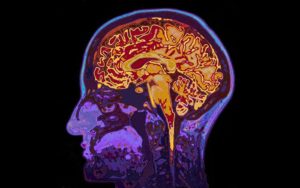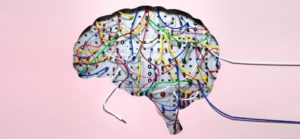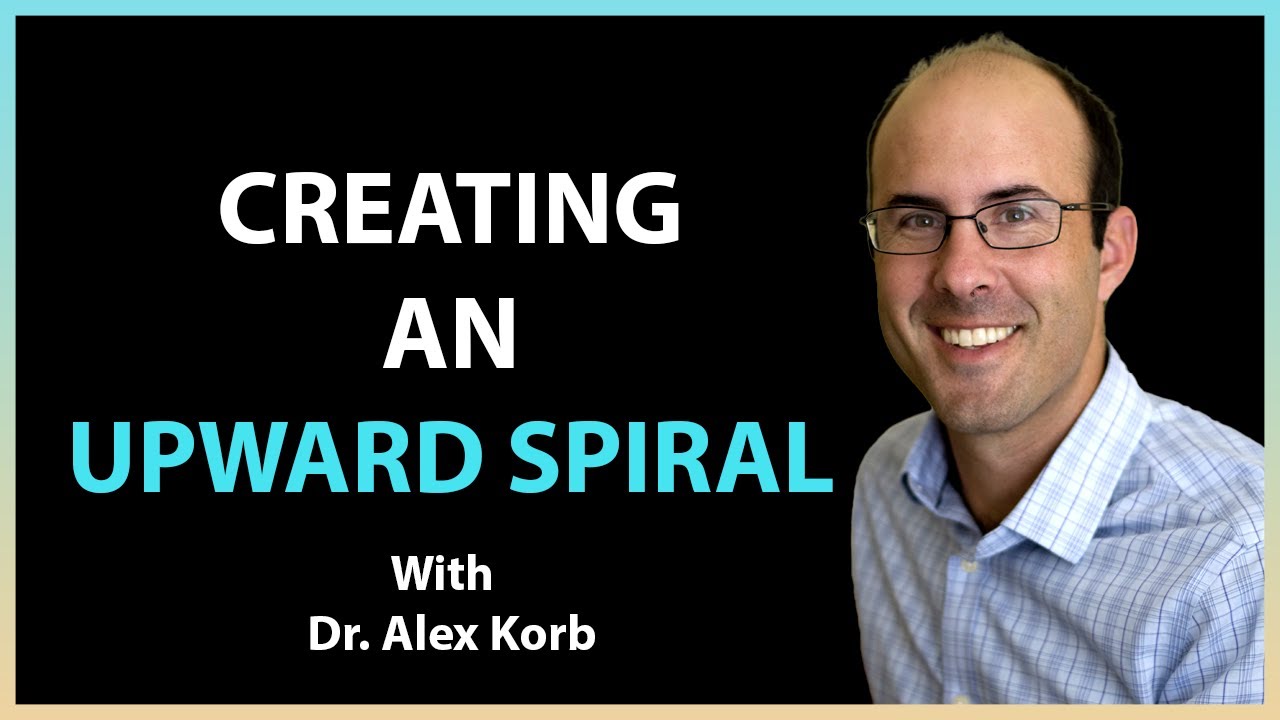Paula Davis-Laack, a contributor who writes about stress-resilience, burnout and well being at work discusses how the ability for lawyers to adapt to a changing workplace environment is essential for resilience. Part of the challenge of doing so involves greater flexibility in how lawyers approach problems, receiving criticism constructively and developing positive working relationships with your colleagues. Read the article here.
What Resilient Lawyers Do Differently
Lawyer Burnout and the Finish Line Problem
This blog by attorney turned therapist Will Meyerhofer discusses how a constant stream of fresh, time-consuming challenges, what he terms the “finish line” problem, contributes to burn out in the legal profession. As Mr. Meyerhofer explains, it is very difficult to, upon successfully completing a marathon (and giving it everything you to do so in the process), be told that you must be ready to run a new one almost immediately. Read it here.
Rewire Your Burned-out Brain
Burnout often results from extended periods enduring the emotional stress precipitated by unaccomplished expectations or failure to fulfill unreasonable demands. The symptoms can include intensified emotional exhaustion, physical fatigue, lowered self-worth, changes in eating and exercising habits, social withdrawal, sleep disorders, anxiety, and depression.
If You’re Burned Out, Your Brain Has Rewired to Survival Mode
There are specific and reproducible patterns of changing neural activity and brain connectivity associated with the stress buildup that leads to burnout. In the high-stress state subjects’ neuroimaging scans reveal less activity in the higher, reflective brain (Prefrontal cortex/PFC) and more activity in the lower, reactive brain that controls involuntary behaviors and emotional responses. Prolonged stress correlates with structural increases in the density and speed of the neuron-to-neuron connections in the emotion-driven reactive networks of the lower brain and corresponding decreases connections in prefrontal cortex conscious and reflective control centers.
The explanation of these changes is attributed to the brain’s neuroplasticity defined by the phrase: “neurons that fire together, wire together.” The brain literally rewires to be more efficient in conducting information through the circuits that are most frequently activated.
When stress is frequent, the more frequent activation of the neural pathways to the lower, stress-reactive brain results in their strengthening from enhanced wiring (dendrites, synapses, myelinated axons). These pathways can become so strong that they become your brain’s fast route to its lower, reactive control centers. The stressful, burned out state when the lower, reactive brain is in charge overcomes the calm, reflective, and productive higher neural processing in the (PFC) – the preferred brain locale for control of behavior and emotional self-management.
As your efforts to achieve unreasonable goals are thwarted or increasing demands recur, and the lower brain dominates more frequently, you lose touch with your reflective brain. With less management coming from your reflective PFC, it becomes harder and harder to logically see these challenges in realistic perspective or to solve problems creatively.
Disappointments take on more emotional power and without your higher brain’s perspective, they are interpreted as personal failures. Your self-doubt and stress further activate and strengthen your brain’s involuntary, reactive neural networks. The spiral down to burnout accelerates as these circuits become the automatic go-to networks. Your brain achieves less success in problem-solving and emotional control and ultimately reacts by withholding efforts to escape the burnout state.
Reset Your Brain’s Default Neural Network from Retreat to IGNITE!
The good news is you can apply what we’ve learned from neuroscience about your brain’s survival mode to take actions to retrieve voluntary control of your choices and emotional wellbeing.
You can activate the same neuroplasticity, that gave dominance to the lower brain networks in the burnout state, to construct a new, stronger positive default response. With increasing successful experiences in achieving goals, you can reset the circuits to redirect your brain to access its highest cognitive resources. You can build up newly improved circuitry switching your responses from retreat to IGNITE for mindful awareness and creative problem-solving!
Since an effort-failure pattern sets up the brain’s survival response to withhold effort, you’ll need to strengthen your brain’s recognition that effort toward your goals can result in success. Your weapon of mass reconstruction can come from your brain’s very powerful drive for its own intrinsic neurochemical reward— dopamine and the deeply satisfying and motivating pleasure it brings. When the brain releases dopamine in rewarding bursts, you experience a deep intrinsic satisfaction along with increased motivation, curiosity, perseverance, and memory. Dopamine is particularly released when your brain recognizes that you’ve achieved a challenge (from the “I get it” of figuring out a joke to the satisfaction of completing a marathon).
To get the dopamine-pleasure response from challenges achieved, you’ll need to plan for your brain to experience frequent recognition (feedback awareness) of incremental progress. The choices of what you set as a goal should be guided by their desirability and the goal’s suitability to be broken down into clear segments. You want to set goals, the progress of which, you can chart or easily recognize with each stepwise challenge and success. The pleasure burst of dopamine’s intrinsic motivation accompanying your brain’s recognition of each progressive increment achieved in the goal pathway will keep you motivated to persevere.
Goal Buy-In for Your Brain’s Neural REWIRING
Buy-in and relevance are important in choosing your rewiring goal. Since your goal is to rewire your brain’s expectations that your goal efforts do yield progress, despite increasing challenge, you need to really want the goal. This is not the time to challenge yourself with something you feel you should do, but won’t really look forward to, such as dieting, climbing stadium stairs, or flossing after every meal.
The idea of planning and achieving goals as a burnout intervention is probably not new to you. These are likely to be activities you’ve considered but didn’t do for the obvious reason. They take time. when it comes to adding another activity to your schedule, past experiences have left you with the expectation that there is not enough time.
These first goals that can provide ongoing awareness of your progress are often tangible (visible, such as planting a garden or making pottery on a wheel, or auditory such as playing an instrument, or physical such as learning tai chi), but your goal can also be spending more time at something you already do, but want to do more frequently or successfully, such as journaling, practicing yoga, or sketching.
You’ll Find Your Own Goal for Buy-In, but Here are Some Examples of Planning
Physical goals: Notice I didn’t say exercise. That’s not as motivating as “training” for a physical goal you want to achieve, even though they often overlap. If you want to run a 10K, and you enjoy running, the goal for an achievable challenge could first be building up to the distance starting with your baseline distance you comfortably run now. Then, plot out the increments that you’ll consider progressive successes, such as adding 100M each day or a week (with increments based on what you consider both challenging and achievable). Once you reach 10K goal, speed can become the next goal again plotted out in segments of incremental progress before you start.
Hobbies: From woodworking to shooting wooden arrows, hobbies really are opportunities for brain rewiring. Again, plan your stepwise achievable challenge increments. If you select darts, start with a home dartboard—low initial investment and throw from a close, but challenging distance at first. As you get better in accuracy move back further. Record your results with the notations of the distance of each improvement you set as an achievable challenge. If you get so good that you are no longer challenged by the dartboard, try that archery!
Mindfulness and meditation are certainly positive interventions for burnout and will be topics of a subsequent blog.
Your Rewired Brain’s Default Changes from Defeat to Ignite
With your understanding of what happened in your brain to create the hopeless frustration of burnout, you’ll hopefully have more positive expectations to help you put in the effort to try (or retry) suggested interventions. Your own natural dopamine-reward system will then be at work deconstructing the resistance network built by your burnout as you reset your circuits of motivation.
The repeated experiences of dopamine-reward you’ll experience as you monitor your goal progress will literally change your brain’s circuitry. Repeated effort-reward experiences promote the neuroplasticity creating neural networks that expect positive outcomes in your new default network. This is because your brain will build stronger connections into the memory pattern. The expectation in achieving this challenge will bring pleasure. As with other less used networks, the previous lower brain stress-activated go-to response network you developed in burn-out, that caused you to react negatively to stressors, will be pruned away from disuse.
You’ll be rewired with optimism and renew positive expectations about your self-efficacy. With your higher, reflective brain back in control, as you access your perseverance, innovation, and creative problem-solving when you need them.
Just be sure to take the time to break down big challenges into opportunities to recognize incremental progress as you achieve each small step en route to your goals. With that positive recharge, your well-deserved dopamine reward will sustain your brain’s motivated perseverance on to the next step of the path to your goals.
Dr. Judy Willis is a board-certified neurologist and middle school teacher, specializing in brain research regarding learning and the brain. With a unique background as both a neurologist and classroom teacher, she writes extensively for professional educational and parenting journals and has written six books about applying the mind, brain, and education research to classroom teaching and parenting strategies. The Association of Educational Publishers honored Dr. Willis as a finalist for the Distinguished Achievement Award for her educational writing. Check out her website.
Depression Dominates Legal Industry, Starting at Law School
The Dave Nee Foundation reports that an average amount of students enter law school with depression, around 8-9 percent, but upon graduation, around 40 percent of law students will have depression. The leading cause of disability in the world and in the U.S. is depression. Some call depression an “epidemic,” which could very likely be accurate in the legal world. Read the full article here.
Five Ways for Law Firms to Support Health and Wellness
This article, written by Jamie Spannhake for Attorneyatwork.com, details five ways firms can help their people reduce stress and anxiety, improve cognition, and access tools to survive, even thrive, in a difficult working environment. Read the article here.
Depression and Loss of Energy: A Waiting Game
Reversing the downward spiral of depression takes less energy than you think.
Depression and loss of energy — it is the beginning of a waiting game that does not end well.
Sometimes depression is born from loss of achievement, loss of goals, and loss of positive feelings about oneself. When low energy plays a role, a person who is not blessed with high drive and physical energy can see a spiral into depression start quickly. But even people with more energy lose it while bearing the weight of the losses. And, without a lot of energy, people begin to wait for things to get better around them rather than take action to make a change.
The Downward Spiral
Spiraling — the word makes it seem like a gentle way to go down, but when it comes to depression, going down is hard to stop, and once at the bottom, reversing the spiral takes intention and support. I hear about this often from my younger depressed clients — those adults who started out of high school or college ready to be successful but who found the world did not fulfill the vision they had.
Jeremy (not his real name) was one such young man. He never had to work too hard to get a passable grade point and was popular enough to have a solid romantic relationship. He was ready happy with his life. But, as commonly happens, the college romance did not last, which made him feel down in the dumps. Then the company he worked for, facing hard times, cut his hours. He now did not earn enough to live on but he expected the company, not himself, to change and he took no action. He waited for work to increase his hours, but in the meantime, he felt like a failure, and the waiting sapped him. His self-esteem, already suffering from being single again, took another hit as he saw his money dwindle to nothing. He started to isolate himself from friends without funds for fun and without a date to go along. Waiting was his enemy. Without meaningful activity beyond limited work hours, that isolation increased his depressed mood.
Waiting also intensified the mental and physical fatigue, so he slept later in the morning since he did not have to get to work early. He began to think he had a lot of time every day to work on his situation, so he did not start on possible job hunting and, as the day melted away, it was too easy to let himself decide that tomorrow was a good day to start fresh. But that waiting also increased his fear that nothing could change and his mood became very depressed. That depression and his situation robbed him of the very things he needed to reverse the spiral: meaningful work (purpose, as well as money), positive interactions with others, pride in his achievements, sense of competency, and a feeling of being loved.
This spiral is one I have seen repeatedly in young adults who have not met with easy success out of high school or college. They often did not have to work at jobs during those years to obtain phones or cars or clothes or do costly activities, such as attend concerts or sporting events. One young man I worked with as he finished high school, Casen (again, a pseudonym), felt literally terrified of applying for a part time job so that he could begin developing job skills and a resume and have some spare cash. Without classroom demands, he moved into waiting mode: waiting to apply to community college, waiting for a job that might fall into his lap. (The job that a friend would provide not that Casen would go search for since the friend said he could get his boss to hire Casen). Waiting did not bring him the job or the college acceptance letter, and he felt even more scared and more depressed. And he judged himself rather mercilessly: believing he would never succeed. That negative mindset robbed him of even more energy, and the more time he spent watching shows on his laptop, the less energy he had to reverse the downward spiral to depression.
What can be done about this? It is typical that an outside force will help. If you are reading this you might be saying to yourself phrases like, “Yeah — the outside force of getting evicted or starving! That would work!” If so, you would be correctly identifying motivators! At times, though, a person in a downward spiral ends up living with family or friends who are being helpful to them in averting disaster, but the pattern of waiting on something outside themselves does not change until motivation can pick up.
Reversing the Downward Spiral
How is it possible to reverse the spiral? Raising energy is a primary initial goal — with or without motivation. To start the spiral on an upward trend, simply:
Stop telling yourself negative things: you only reinforce the belief they are true. Interfere with negativity, saying, “Stop! I choose to believe I will solve this!”
Stop isolating. Get in contact with people, any interaction with others will help you also get outside of your own negative thoughts or mood.
Stop talking about your own life for a short while. When you only ruminate on your troubles, they seem larger. Ask someone else about his or her life. Hearing about another’s life, you can look at your reactions. I love the saying that troubles shared are cut in half and joys shared are doubled.
Then start the upward spiral with attention to developing a sense of purpose. Don’t assume this is a deep spiritual quest. In fact, it can be initially as simple as scheduling your day and meeting some regular commitments. An important brain change toward a less depressed mood occurs results from intentional activity. You get a blip of glutamate, an activating neurochemical, and one of dopamine, the feel-good neurochemical, and the combination is energizing. The bigger the step you take, the more you get. And any action will supply enough energy to do a little more.
My Tips
If you are underemployed — set a daily schedule that begins with a reasonable wake-up time.
Have a pattern to the day what news show you listen to or watch when you have your coffee when you feed a pet or meet a friend for tea.
Leave the house — you might have to start with leaving your room and interacting with others in your home- but forcing yourself toward less isolation is important.
At work, be sure to talk to your colleagues and ask them how they are; It improves the chance of a positive social exchange that can increase your self-esteem a bit and moves the spiral upward a fraction.
Set small goals — like walking the dog an extra 5 minutes — and notice you achieved them. There’s a bit more glutamate and dopamine!
Do something physical. When you move your depressed body you gain energy rather than lose it, so even a few minutes of tidying up can raise enough energy to do a bit more.
The above ideas tend to work best when you are working with another person who supports you, such as a therapist, a 12-Step sponsor, or a good friend who knows your goals and will help you keep track of them.
As you stop the waiting game — that passive waiting for life to change without you doing something to change it — the spiral reverses. You will be surprised that you will slowly feel your energy rise so you will be more able to take the next steps toward success.
By Dr. Margaret Wehrenberg, Psy.D.
This article first appeared in Psychology Today website.
Dr. Wehrenberg is the author of 5 books published by W.W. Norton, including The 10 Best Ever Anxiety Management Techniques, The 10 Best Ever Depression Management Techniques and her most recent 10 Best Anxiety Busters, an ideal book for the general public. She earned her M.A. studying psychodrama and bioenergetics, and had years of experience as a certified drug and alcoholism counselor, before earning her Psy.D. She now specializes in treating anxiety and depression and has a private practice in Naperville, IL. She is a frequent contributor of articles to The Psychotherapy Networker magazine, has contributed a chapter to Clinical Pearls of Wisdom (Ed. M. Kerman), and has produced CD for breathing, muscle relaxation and imagery for anxiety management. Check out her website at www.margaretwehrenberg.com.
‘Better Call Saul’ Highlights Stress and Mental Illness in the Legal Profession
The ABA Journal reports: “Chuck McGill’s suicide in Better Call Saul reflects what is happening within the legal profession throughout the United States. But anxiety and depression are not confined to practicing lawyers. A study of law school students at Yale University found that 70 percent admitted to suffering from some form of mental health issues. Eighty percent of those respondents considered help, but only half of them actually sought it out. Read the article.
The Creativity Cure for Depression: An Interview with Dr. Carrie Barron
Podcast: Play in new window | Download
Today’s guest is Dr. Carrie Barron, a board-certified psychiatrist/psychoanalyst on the clinical faculty of the Columbia College of Physicians and Surgeons who also has a private practice in New York City. She has published in peer-reviewed journals, won several academic awards, and presented original works related to creativity and self-expression at national meetings of the American Psychoanalytic Association. Along with her husband, Alton Barron, M.D., a hand and shoulder surgeon, she co-authored the book, The Creativity Cure: How to Build Happiness with Your Own Two Hands.
Dan:
Why is depression such a problem in our culture?
Carrie:
I think the level of stress has gone up enormously because we have so much to do and we’re on twenty-four hours a day. So I think because of technology, which offers us so many great things, but gives us much to do. I think that’s part of it. I also think, especially for children, we’re in a striving, ambitious, be productive all the time mentality – for children and adults. We need to play, we need to hangout, we need to have spontaneous time. I think spontaneous thought does a lot for alleviating depression and anxiety.
The Neuroscience of Depression: Creating an Upward Spiral with Dr. Alex Korb
Podcast: Play in new window | Download
The following is an edited transcript of the podcast recorded interview with Dr. Alex Korb. This transcript has not been reviewed and is not a word-by-word rendering of the entire interview.
Hi, I’m Dan Lukasik from lawyerswithdepression.com. Today’s guest is Dr. Alex Korb. Dr. Korb is a neuroscientist, writer, and coach. He’s studied the brain for over fifteen years, attending Brown University as an undergraduate and earning his Ph.D. in neuroscience from UCLA. He has over a dozen peer-reviewed journal articles on depression and is also the author of the book, The Upward Spiral: Using Neuroscience to Reverse the Course of Depression One Small Change at a Time. Interesting, he’s also coached the UCLA Women’s Ultimate Freesbie team for twelve seasons and is a three-time winner for Ultimate Coach of the Year. His expertise extends into leadership and motivation, stress and anxiety, mindfulness, physical fitness, and even standup comedy. Welcome to the show.
Anxiety, Stress and Depression at All-Time High Among Americans: Study
Newsweek magazine reports that more Americans than ever before suffer from stress, depression, and anxiety, with those affected often too poor to afford general medical treatment, according to a new study which found that around 8.3 million people suffer from some form of serious psychological distress, which represents a large increase over previous years studied. Read the entire article here.
Built by Staple Creative
















